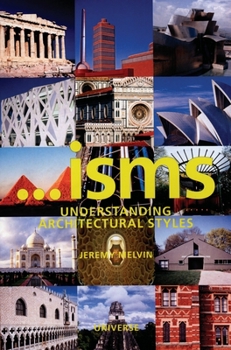'Isms: Understanding Architectural Styles
Following the success of Isms: Understanding Art, this engaging and informative guide to the significant "isms" of architectural history spans from the ancient Greeks, Romans, and the Renaissance up to the present day. Each spread is devoted to a distinct architectural movement and explains when it first emerged, the historical period to which it applies, the principal disputes over its applicability, and illustrates important structures, practitioners, key words, and distinctive features. From Hellenic Classicism and Expressionism to Brutalism and Blobism, with many stops along the way, these sixty well illustrated and clearly defined "isms" help put all of the "built environments" of the world into context.
Format:Paperback
Language:English
ISBN:0789313804
ISBN13:9780789313805
Release Date:February 2006
Publisher:Universe Publishing(NY)
Length:160 Pages
Weight:0.86 lbs.
Dimensions:0.7" x 5.2" x 8.2"
Customer Reviews
2 ratings
A tidy little summary of movements in architecture
Published by Thriftbooks.com User , 15 years ago
Almost everyone would have an issue with one entry or other in here. But overall this is a nice little summary of the intellectual history of architecture with decent images and enough facts to get one started with more in-depth research. The icons are a bit silly, but it is well written. See also the similar volume on art movements, Isms: Understanding Art.
Architecture in a nutshell (for better or for worse)
Published by Thriftbooks.com User , 16 years ago
Here's a book that probably appears on few reading lists in architecture schools. I'm sure that it's too concise and too concrete to be liked by "serious" architectural historians and theoreticians. That said, I know that my own education in architecture would have been greatly enhanced had I found this earlier in my academic career. It's no replacement for the readings I have been assigned, for it doesn't provide anything on, say, modernism half as engaging as what we might get from Peter Eisenman or Colin Rowe. But Eisenman and Rowe don't exactly ease newcomers into the discourse. Jeremy Melvin (himself a perfectly capable historian) is willing to sacrifice depth in this book and lend his readers a helping hand. This book is a friendly little guidebook, no more, no less. Its hokey iconography is a little annoying, its colors a little garish, but the terse summarization of complicated ideas is admirable, and the book impressively accessible.






